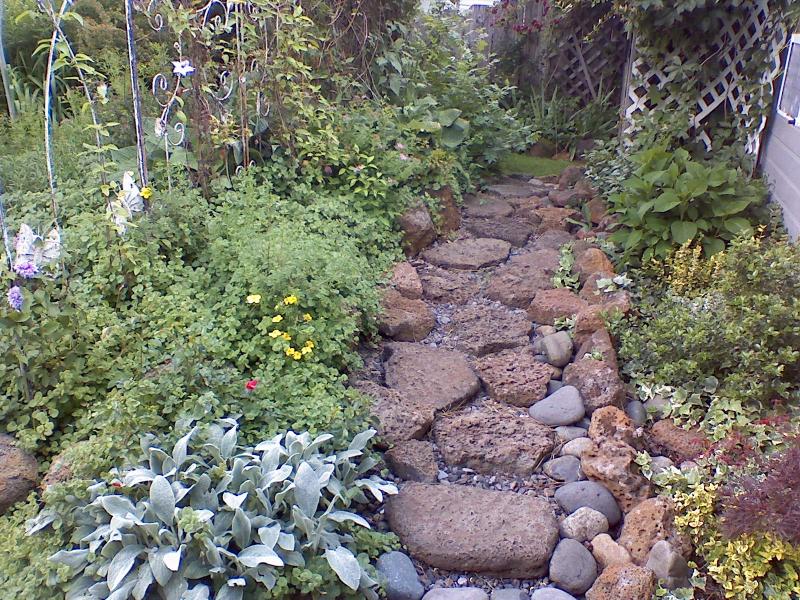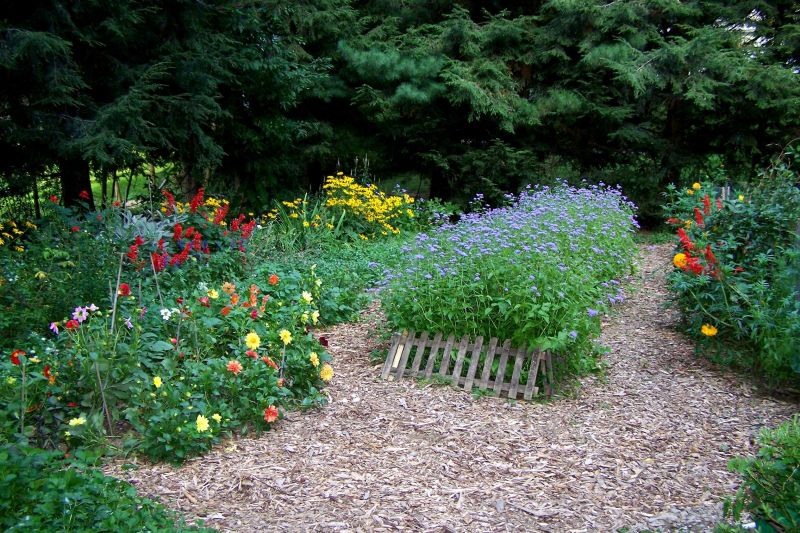Walk This Way
Creating a landscape to be gazed at from afar is all well and good. Presenting that sensational view from the street or from the house is one of the main goals of just about any yard transformation. But gardens are also meant to be enjoyed on a more personal level. Intricate leaf patterns, unusual foliage textures, and the detailed colors of blooms and flowers can only be fully appreciated from up close. In most cases, that necessitates adding paths and walkways to the landscape. And just as with every other element, how you execute a walkway makes all the difference in the world to the overall look, feel, and success of the garden.
In most cases, a walkway connects two points in the yard. It starts somewhere, and ends somewhere. But that doesnt necessarily mean that a straight line is the best way to get you from Point A to Point B. Thats why most landscape designers use flowing curves whenever they install a walk, to encourage you to stop and smell the roses theyve planted (and charged you handsomely for) along the way. Check out the meandering path to Patty Roberts gazebo in Springville, UT:
A straight-shot walkway would be quicker, yes. But isnt this far more inviting and interesting? Doesnt it inspire you to take your time and leisurely stroll through the space, pausing to admire the gorgeous blooms scattered about?
Many DIYers choose the stepping-stone route when putting in a walkway. You can use actual stones set into the earth, or go with something more decorative. Concrete pads can be bought in circles, hexagons, or other nature-inspired forms, like the leaf-shaped stepping stones used in the Exeter, CA yard of Heartland Treasures:
When laying stepstones, make a few practice passes up and down the route to figure out how far apart to space your stones for a comfortable walk, and know that the ideal spacing for you may not match everyone elses stride.
Of course, you can blanket the entire walkway with stone and create a totally rockin and rustic look, like Dana did in her Burney, CA yard:
Her blend of flat lava rock as the walking surface with rounded river rock as a border and gravel in between the stones is brilliant, turning what looks like a dry creekbed into an awesome garden staircase that practically dares you to not do a little exploring.
Many landscapes pay close attention to the material used in their walkways to help nail a particular theme. Cottage gardens, for example, often use pea gravel pathways. Its an informal-feeling material that goes well with the often-overflowing feel of beds bursting with plant material. And the sound that pea gravel makes under your feet is unlike anything else. Admit it, you want to step out onto Gaonou Xiongs pea gravel patio in Tennessee just to hear that satisfying crunch:
Like the look of a gravel path but hate the thought of kicking little pebbles all over your yard? Use an angular gravel; the stones lock themselves together underfoot and keep you from feeling like youre slogging through loose sand at the beach. Slate chips, for instance, look cool and still have that unmistakable gravel-path sound.
For a completely natural look in a woodland setting, you cant go wrong with mulch pathways. Theyre more at home than a poured or placed material and are easily topped off with new mulch as needed. Heres a nice example from Jannetie in Red Hook, NY:
Whatever material you choose for a garden walkway, dont skimp on the size. It seems that the standard width for a path is 3 feet, but stop and think about that for a sec. Would you ever try to walk with someone side-by-side through your bedroom doorway? Thats probably the same width. Adding just 12 inches to a walkway allows two people to comfortably take a garden stroll without feeling crowded. Take a peek at Nanci DeSouches basketweave-brick walkway:
Its more-than-generously-sized for two people (or one person and a full wheelbarrow, judging by the working vegetable gardens to the left), and gets extra bonus points for the uneven bricks and mossy stuff growing on, around, and between them. Thats a classic Old World look thats right at home in a centuries-old garden in Europe
even if its really a backyard in Santa Cruz.

